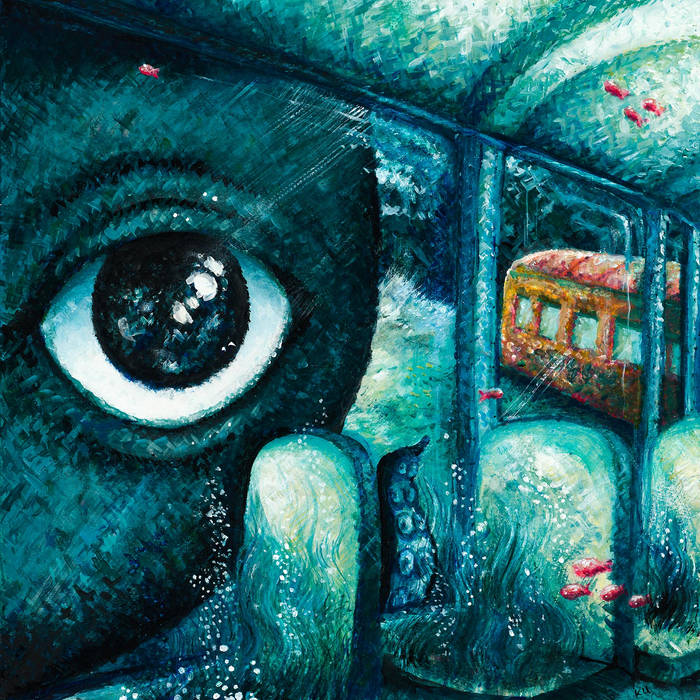The Breakdown
It’s hard to pin down pianist and composer Eric Pan’s music, he is a troubadour and traveller both literally and creatively. Pulled towards jazz during his studies at the University of California, Santa Cuz, he’s been at the heart of New York’s vibrant grass roots scene for some time as well as building a strong reputation as an innovative solo performer around the Berlin clubs. As a touring musician he’s seen stages from Europe to Costa Rica, across numerous US states through to Taiwan, his birth-place. He also shared the spotlights with both Roy Hargrove, D’Angelo’s go to trumpet player, and drummer Jeff Hamilton.
With miles continually clocking and collaborators calling, it’s unsurprising that Pan has waited a while to work more on his own recordings but since 2020 he’s been sharing his own distinct musical thoughts through a steady flow of releases. There’s been his set of exquisitely delicate piano vignettes on 2022’s ‘Lullabies Of Pleiades’ and a hidden gem of live solo keyboard explorations with ‘Awakening’ a year later. His core project however, has been the ambitious ‘Travel Poems’ trilogy. ‘Chapter 1. Secret Towns’ emerged in summer 2020 to be followed by ‘Chapter 2. The Night Sea’ two years later and now comes the concluding part of this illustrious journey ‘Chapter 3. There is no path back’.
The connection between all three parts comes through both the project’s process and concept. From 2017 onwards, during his globetrotting excursions Pan always made sure he had an instrument at hand, however simple, to capture and record brief musical ideas in the moment. When he came to listen back to this compendium of sketches, he realised that they mapped something beyond an itinerary, more “an emotional thread” of “being somewhere far from any place familiar”. A year later, Pan took a step further and began to develop around thirty of these formative tunes with a trans-continental recording schedule using different pianos and varying set-ups. Working with his sound engineer Brian Trahan, the leap of faith was also taken to go long form, weaving the tracks into three separate volumes of ‘Travel Poems’ and introducing sourced field recordings to further illustrate these impressionistic compositions. As Pan says ‘It was as if the music were a movie, and that I was scoring that movie with found sounds.”
So to say the ‘Travel Poems’ project is multi-layered is an understatement, but its impact doesn’t buckle under such complexities. It’s a work that meanders naturally and restoratively through the phases, expansive and fulfilling music with ‘Chapter 3 There is no path back’ as a subtle satisfying conclusion. With this final collection it’s perhaps fitting that the mood feels a little more restrained than previous instalments, with less of the buoyant expectancy of Chapter 1 or the eerie drift Chapter 2’s ‘Night Seas’. Opener Sellwood by Bicycle keeps Pan’s trilling neo-classical étude echoing in the corridor as the sounds of street life run and hustle by. That postcard of easy-paced community extends through Sunrise Market, where slowly waking chords mingle with the murmur of voices. There’s a Mehldau like authority to Pan’s rolling piano lines, confident on drawing high emotion from an economic melody and flourishing alongside Nir Sabag’s simmering drum conversation. Sabag’s empathic percussive touch also brings a loose late-night locomotion to the woozy rhumba smooch of Honey and Spirit, matching Pan’s increasingly bold improv stride for stride. It’s a finely detailed snapshot of a final night goodbye or perhaps a letting go of dreams who knows, that’s for the listener to imagine themselves.
Such diligent introduction of other musicians to add dynamic and detail to the stories was an impressive feature of the first two ‘Travel Poems’ releases and on ‘Chapter 3. There is no path back’ that deft touch remains. View from a Llama is a particular highlight with Pan joined once more by Sabag on drums plus Hugo Reydet on bass. They make for an effortlessly elegant trio, loose, liquid and lively, pushing Pan’s gleeful, chiming electric piano to some fizzy highs. It’s a shame the tune has to fade as the bubbly funkiness approaches the boil but the wistful hiss of watery sound effects discretely brings move onto the next story.
The more you engage with this album, the more immersed you get in its unassuming presence. You become aware of the intricate weave of those natural found sounds, the tea pouring, the fairground organs, the street chants, and their contribution to the overall ‘Chapter 3’ soundscape. They are much more than aids to transition between the tracks, they act as additional triggers to the listener’s imagination. Tuning in deeply the beautifully mournful piano piece Sequel to a Memory you gradually sense the sound of drips and rustling as the song unwinds, minute details with a subliminal influence.
As ‘Chapter 3. There is no path back’ closes with the grand descent of Pan’s piano on Ladder of Damascus and the sombre reflection of his spacious, minimal chords on Twilight Far, you feel as if a journey been paused rather than ended. Eric Pan, with this ambitious series of Travel Poems albums has taken himself beyond the usual jazz pianist/composer interface to a place which merges experimental, electronic and minimal music-making. His future sound explorations should not be missed.
Get Your copy of ‘Travel Poems. Chapter 3. There is no path back.’ by Eric Pan or the whole ‘Travel Poems’ triple set HERE














No Comment